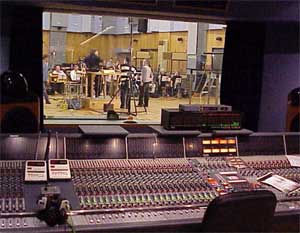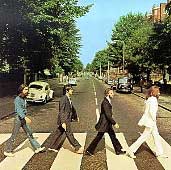Abbey Road Studios: Difference between revisions
No edit summary |
m (Text replace - "[[Category:Computers and information processing" to "[[Category:Computing and electronics") |
||
| (One intermediate revision by the same user not shown) | |||
| Line 15: | Line 15: | ||
But it was The Beatles who made Abbey Road the most famous recording studio in the world. The group visited the studios on 6 June 1962 to audition for the famous record producer George Martin. Thereafter, the group returned to the Abbey Road studios through the end of 1960s, and even named one of their albums Abbey Road in July of 1969. To this day, tourists have themselves photographed strolling across the crosswalk, emulating the famous album cover. | But it was The Beatles who made Abbey Road the most famous recording studio in the world. The group visited the studios on 6 June 1962 to audition for the famous record producer George Martin. Thereafter, the group returned to the Abbey Road studios through the end of 1960s, and even named one of their albums Abbey Road in July of 1969. To this day, tourists have themselves photographed strolling across the crosswalk, emulating the famous album cover. | ||
[[Category:Signal_generation_&_recording|Abbey]] [[Category: | [[Category:Signal_generation_&_recording|Abbey]] [[Category:Computing and electronics|Abbey]] | ||
[[Category:Signal_generation_&_recording|Abbey]] [[Category: | [[Category:Signal_generation_&_recording|Abbey]] [[Category:Computing and electronics|Abbey]] | ||
Revision as of 15:57, 22 July 2014
Abbey Road Studios
Abbey Road Studios is one of the oldest and most famous recording studio complexes in the world. It consists of a group of buildings centered around a converted house located on Abbey Road in London, England.
The English branch of Emile Berliner’s Gramophone Company was becoming so busy in the late 1920s that some of its leaders began thinking about opening a new studio. Not everyone was thrilled by the plan. The leading opponent was Fred Gaisberg, who had become the artistic director for the Gramophone Company’s HMV brand of records. Gaisberg thought it was foolish to spend large sums of money on a studio, but Gramophone officials pushed the project through and bought the house on Abbey Road in 1929. The company eventually purchased additional buildings on the same block and built several new buildings.
When Abbey Road Studios was opened by Sir Edward Elgar in November of 1931, the Gramophone Company had merged with other companies to form Electrical and Musical Industries (EMI). The complex consisted of three studios. Studio 1 was probably the largest studio in the world at the time, and could easily house a full symphony orchestra, while studios 2 and 3 were built for smaller projects. In 1931, each studio was wired to accommodate up to six microphone channels, all of which could be controlled from a central booth. The Western Electric Company supplied the original electronic equipment.
Almost immediately, however, EMI began developing its own recording technologies. The famous English engineer Alan Blumlein was instrumental in helping Abbey Road gain its independence from American electronics manufacturers. He introduced his “moving coil” microphones and recorders in the 1930s. Then, in 1931, Blumlein developed the first stereophonic disc recording system, but unfortunately it was not used for many years.
Abbey Road Studios is famous for the artists who have recorded there. These include Jazz icon Glen Miller, who made his last recording there in the 1940s, as well as later pop artists such as Cliff Richard, the Hollies, Manfred Mann, the Seekers, the Pacemakers, and Queen. And it was in Studio Three that Pink Floyd recorded Dark Side of the Moon in 1973, which went on to become one of the top selling albums of all time.
But it was The Beatles who made Abbey Road the most famous recording studio in the world. The group visited the studios on 6 June 1962 to audition for the famous record producer George Martin. Thereafter, the group returned to the Abbey Road studios through the end of 1960s, and even named one of their albums Abbey Road in July of 1969. To this day, tourists have themselves photographed strolling across the crosswalk, emulating the famous album cover.

